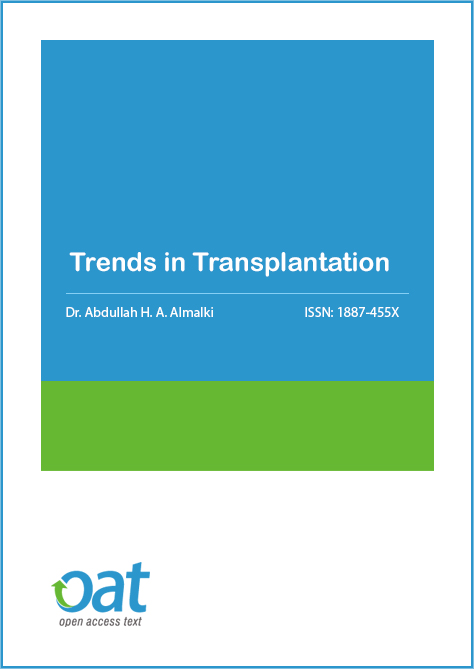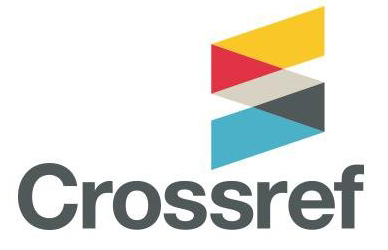Acts of Parliament
The required elements are:
Short title (with key words capitalized), which includes the year followed by the chapter number in brackets. Place of publication: Publisher.
Higher Education Act 2004. (c.8). London: HMSO.
For Acts prior to 1963, the regal year and parliamentary session are included:
Road Transport Lighting Act 1957. (5&6 Eliz. 2, c.51). London: HMSO.
If you need to refer to a specific section and paragraph, include the section, paragraph number and subsection.
Finance Act 2007. s.45(9)(b).
Satutory instruments
The required elements for a reference are:
Short title (with key words capitalized). Year. the abbreviation 'SI' followed by the year of publication and the SI number. Place of publication: Publisher.
Public Offers of Securities Regulations 1995. 1995 SI 1995/1537. London: HMSO.
Official publications such as Command Papers
The required elements for a reference are:
Authorship, which may be part of the title, Year. Title, in italics if a separate element, Offically assigned number such as a Command number as it is on the document, within brackets. Place of publication: Publisher.
Royal Commission on civil liability and compensation for personal injury, 1978. (Pearson Report) (Cmnd. 7054). London: HMSO.
Select Committee on nationalised industries (1978-9), 1978. Consumers and the nationalised industries: prelegislative hearings (HC 334, 1978-9). London: HMSO.
House of Commons, Home Affairs Committee, 2012. The Work of the Border Force. (HC 523, Sixth Report of Session 2012-13) - Report, Together with Formal Minutes. London:TSO (The Stationery Office).
Law reports
It is recommended that you follow accepted legal citation, which is not part of the Harvard system. For this the required elements for a reference are:
Name of the parties involved in the law case, Year of reporting (in square brackets where there is no volume, or round brackets as indicated by the reference you are using) abbreviation for the law reporting series, part number/case number/page reference if available.
Jones v Lipman [1962] 1 WLR 832.
Saidi v France (1994) 17 EHRR 251, p.245.
R v White (John Henry) [2005] EWCA Crim 689, 2005 WL 104528.
In the last example you should only quote the two law reports if you have used them.
An intext reference for the above example would read:
In the recent case of R v White (John Henry) (2005), the defence noted ...
Annual report
The required elements for a reference are:
Corporate author, Year. Full title of annual report, Place of Publication: Publisher.
Marks & Spencer, 2004. The way forward, Annual report 2003-2004, London: Marks & Spencer.
For an e-version of an annual report. The required elements for a reference are:
Author or corporate author, Year. Title of document or page, [type of medium]
Available at: include web site address/URL(Uniform Resource Locator)
[Accessed date]
Marks & Spencer, 2004. Annual report 2003-2004. [online]
Available at:
[Accessed 4 June 2005].
Archive material
If you have used material from archives or special collections, the required elements for a reference are:
Author, Initials., Year. Title of document. [type of medium] Collection, Document number. Geographical Town/Place: Name of Library/Archive/Repository.
Brown, P.S., 1915. An address to the Farmer. [manuscript] Holdbury Collection. 600. London: Holdbury Library.
An intext reference for the above example would read:
(Brown, 1915)
British Standards and International Standards
The required elements for a reference are:
Corporate author, Year of Publication. Identifying letters and numbers and full title of Standard, Place of publication: Publisher.
British Standards Institution, 1990. BS 5555:1990 Recommendations for wiring identification. Milton Keynes: BSI.
International Standards Office, 1998. ISO 690 - 2 Information and documentation: Bibliographical references: Electronic documents. Geneva: ISO.
The required elements for an e-version are:
Corporate author, Year. Identifying letters and numbers and full title of Standard. Place of publication (if available): Publisher [online] Available through: Anglia Ruskin University Library website <http://libweb.anglia.ac.uk> [Accessed date].
British Standards Institution, 2011. BS EN 594:2011 Timber structures. Test methods. Racking strength and stiffness of timber frame wall panels. British Standards Online [online] Available through: Anglia Ruskin University Library website <http://libweb.anglia.ac.uk> [Accessed 31 August 2011].
Patents
The required elements for a reference are:
Inventor name, Initials., Assignee., Year. Title. Place. Patent number (status, if an application).
Example:
Graham, C.P., Fonti, L. and Martinez, A.M., American Sugar Co. 1972. Tableting sugar and compositions containing it. U.S. Pat. 3,642,535.
Leonard, Y., Super Sports Limited. 2008. Tin can manufacture and method of sealing. Canada. Pat. 12,789,675.
Conference reports and papers
The required elements for a conference report are:
Authorship, Year. Full title of conference report. Location, Date. Place of publication: Publisher.
UNDESA (United Nations Department of Economic and Social Affairs), 2005. 6th Global forum on reinventing government: towards participatory and transparent governance. Seoul, Republic of Korea, 24-27 May 2005. New York: United Nations.
The required elements for a conference paper are:
Author, Initials., Year. Full title of conference paper. In: followed by editor or name of organisation, Full title of conference. Location, Date. Place of publication: Publisher.
Brown, J., 2005. Evaluating surveys of transparent governance. In: UNDESA (United Nations Department of Economic and Social Affairs), 6th Global forum on reinventing government: towards participatory and transparent governance. Seoul, Republic of Korea, 24-27 May 2005. New York: United Nations.
Reports by organisations
The required elements for a reference are:
Authorship/Organisation, Year. Full title of report. Place: Publisher:
Department of Health, 2001. National service framework for older people. London: Department of Health.
Coulter, A. and Collins, A., 2011. Making shared decision-making a reality: no decision about me, without me. London: The King's Fund./p>
The required elements for an e-version are:
Authorship/Organisation, Year. Full title of report. [type of medium] Place: Publisher. Available at: include web address/URL [Accessed on date].
Department of Health, 2001. National service framework for older people. [pdf] London: Department of Health. Available at:http://www.dh.gov.uk/prod_consum_dh/groups/dh_digitalassets/@dh/@en/documents/digitalasset/dh_4071283.pdf[Accessed 12 September 2011].
Coulter, A. and Collins, A., 2011. Making shared decision-making a reality: no decision about me, without me. [pdf] London: The King's Fund. Available at:http://www.kingsfund.org.uk/publications/nhs_decisionmaking.php[Accessed 12 September 2011].
Dissertations and Theses
The required elements for a reference are:
Author, Initials., Year of publication. Title of dissertation. Level. Official name of University.
Richmond, J., 2005. Customer expectations in the world of electronic banking: a case study of the Bank of Britain. Ph. D. Anglia Ruskin University.
The required elements for an e-version are:
Author, Initials., Year of publication. Title of dissertation. Level. Official name of University. Available at
[Accessed on date].
Fisher, C. W., 2008. The legacy of leadership - a study of leadership influence within a single organisation. DEd. University of Sheffield. Available at:
[Accessed 30.07.2012].
European union documents
Following EU conventions, examples of various EU documents are given below:
The required elements for a reference are:
The name of the Institution where the document originates (e.g. Commission) Form (eg Directive or Decision) Year/Legislation number/ Initials of Institution followed by the date it was passed if known, followed by the title, all in italics.
Council Directive 2001/29 /EC of 22 May 2001 on the harmonisation of certain aspects of copyright and related rights in the information society.
Commission Decision 93/42/EEC of 21 December 1992 concerning additional guarantees relating to infectious bovine rhinotracheitis for bovines destined for Denmark.
EU Regulation 1408/71
REGULATION (EEC) No 1408/71 OF THE COUNCIL of 14 June 1971 on the application of social security schemes to employed persons and their families moving within the Community.
Council Regulation (EEC) 1612/68[5] of 15 October 1968 on freedom of movement for workers within the Community.
Course material and lecture notes
It is important to check with the lecturer who has given the lecture that they are in agreement with course material being included in any Reference List. If they are in agreement, and if it is not a publicly available document, it is important to provide a copy in the Appendix of your work. The citation to the course material in your Reference List should then also refer to the Appendix.
It would also be advisable to follow up any sources mentioned in your lecture and read these for yourself.
Course material / lecture notes - print version
The required elements for a reference are:
Lecturer/Author, Initials., Year. Title of item, Module Code Module title. HE Institution, unpublished.
Williams, B., 2008. Guide to project management, BD45001S Management. Anglia Ruskin University, unpublished.
An intext reference for the above example would read:
(Williams, 2008)
Course material - electronic
The required elements for a reference are:
Lecturer/Author, Initials., Year. Title of item, Module Code Module Title [online via internal VLE], HE Institution. Available at: web address if available over the internet, otherwise indicate if available through WebCT, SharePoint or other virtual learning environment address. [Accessed date].
Williams, B., 2008. Guide to project management, BD45001S Management. [online via internal VLE] Anglia Ruskin University Available at: [Accessed Date 13 June 2008].
An intext reference for the above examples would read:
(Williams, 2008) ...
Quotations from written plays
When reviewing a number of different plays it is essential to cite the title of the plays. If reviewing one play (for example Twelfth Night) it is not necessary to repeat the title in your citations.
Published plays may contain line numbers, particularly in classic texts such as Shakespeare. If they exist it is good practice to include the line number, but Act and Scene numbers must always be included. /p>
Classic plays are available in edited editions and the editor's name should be included with your reference.
The required elements for a reference are:
Author, Initials., Year (of the edition). Title of play. Editors, Edition. (only include this if not the first edition) Place of publication: (this must be a town or city, not a country) Publisher.
Shakespeare, W. 1995. Twelfth Night. (World's Classics series) Warren, R. and Wells, T. eds. Oxford: Oxford University Press.
An intext reference for the above examples would read:
Much speculation has occurred when Malvolio imagines he might marry Olivia, "there is example for't; the Lady of the Strachy married the yeoman of the wardrobe" (Shakespeare, Twelfth Night II,v,36-7).
Interviews
Where you have conducted an interview - using a primary source. You are recommended to check with your Faculty Office for detailed guidance on what you may include.
Where you are conducting the interview, it is important to check with the person being interviewed that they will be in agreement with a transcript of the interview being made available. Since this will not be a publicly available document, it may be included as a transcript within an Appendix in your piece of work.
The citation for this interview should refer to the Appendix.
In an interview (Appendix A) the findings of the report were reviewed and White agreed with ...
In the Appendix you should include details such as:
Interviewee's name. Year of interview. Title of interview. Interviewed by ...name. [type of medium/format] Location and exact date of interview . Together with the transcript.
Where you are using an interview from a source such as a television programme
The suggested elements for a reference are:
Interviewee name, Initials., Year of Interview. Title of Interview. (or Interview on ..name of programme) Interviewed by ...name (first name and surname). [type of medium/format] Name of Channel, Date of transmission, time of transmission.
Ahern, B., 1999. Interview on Morning Ireland. Interviewed by... John Boyd [radio] RTE Radio 1, 15 February 1999, 08:30.
An intext reference for the above examples would read:
(Ahern, 1999)
Press release
These may be print or electronic.
For a print press release:
Corporate author of press release, Year. Title. Press release, date.
RCN, 2009. RCN praises health care staff as infections continue to fall. Press release, 18 June 2009.
For an electronic press release:
Corporate author of press release, Year. Title. [press release] date. Available at: web address [Accessed date].
RCN, 2009. RCN praises health care staff as infections continue to fall. [press release] 18 June 2009. Available at:http://www.rcn.org.uk/newsevents/news/article/uk/rcn_praises_health_care_staff_as_infections_continue_to_fall[Accessed 23 June 2009].
Department of Health, 2011. Act F.A.S.T. campaign relaunched to save more lives. [press release] 28 February 2011. Available at:http://www.dh.gov.uk/en/MediaCentre/Pressreleases/DH_124696[Accessed 15 April 2012].
Religious texts
When you are quoting from a sacred text e.g. the Bible, the Torah or the Quran, the suggested elements for a citation are:
Name of religious text, Book. Sura or Chapter: Verse
An in-text reference for the Bible could look like this...
"In the beginning, God created the heavens and the earth" (The Bible, Genesis. 1:1)
Convention dictates that you do not use page numbers with religious texts
The required elements for a full reference are:
Full title, Year. Place of publication: Publisher.
The Bible: contemporary English version, 2000. London: Harper Collins.
For other sacred texts, it is important that you clearly identify the location of the text that you cite using the appropriate numbering system.
Reference from dictionary
When you are quoting a definition from a dictionary, use the publisher as the author.
The required elements for a citation are:
(Publisher, Year)
(Chambers, 2010)
For the reference
The suggested elements for a reference are:
Dictionary publisher, Year. Full title of dictionary. Place of Publication: Publisher.
Chambers, 2010. Chambers paperback dictionary thesaurus. London: Champers Harpers Publishers Ltd.
Encyclopaedia Britannica, 2012. Encyclopaedia Britannica Online. [online] London: Encyclopedia Britannica (UK). Avaialble through:encyclopaediabritannica.co.uk/intro[Accessed 12 June 2011].
Data Sources
Where data it extracted from a data source such as Isurv or FAME, both the source with the year of currency for that data. should be acknowledge in an intext reference.
Complete details should be included in the reference list.
RICS ISurv, 2013. More new homes. [Building surveying > Pathology > Modern methods of construction > Meeting challenges with MMC] ISurv [online] Available through: Anglia Ruskin University Library
[Accessed 21 May 2013].
Where you have gathered and manipulated data from a data source like FAME or OECD and placed this in a table of your own making, we recommend that you give the source and year of currency, for the data, as an the intext reference and include a note to an appendix. In the appendix you can reproduce the source tables you have used to create your table and include adequate details of how you generated the table you have used in your work.
Computer Program
For a computer program downloaded from the internet, the required elements of a references are:
Authorship/Organisation, Year. Title of program. (Version). [computer program] Distributor/Publisher. (if available) Available at:
[Accessed date]
Adobe Systems Incorporated, 2013. Adobe Air (3.8 beta). [computer program] Adobe Labs. Available at:http://labs.adobe.com/technologies/flashruntimes/air/[Accessed 30 August 2013].










